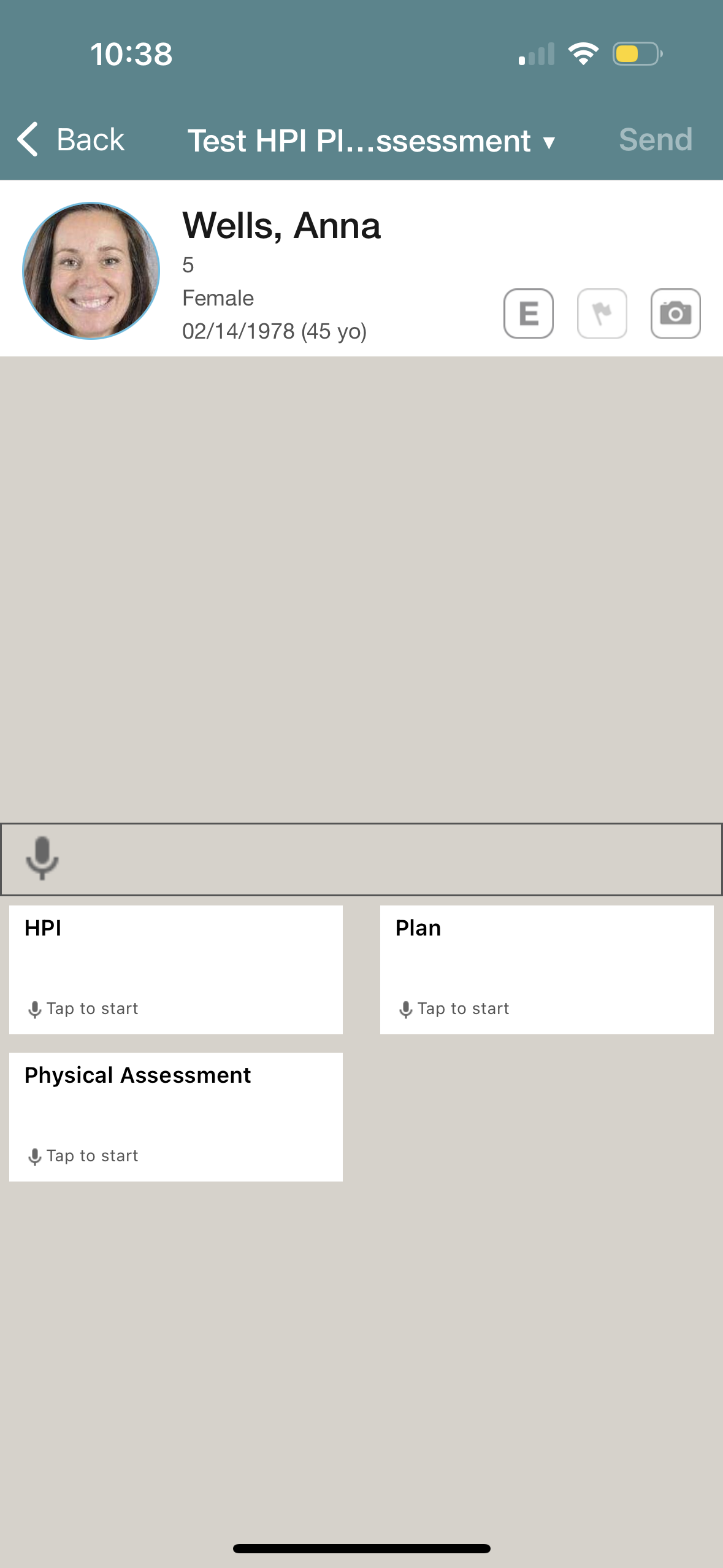Nextgen Mobile EHR
Automate, simplify, and replace outdated clinical workflows, a portable electronic health record (EHR) that enables providers to focus on quality patient care
My role
In my first 8 months as a full-time professional, I took on the challenging role of sole in-house product designer, leading a comprehensive overhaul of a clinical documentation system used by 13,000 providers. After a thorough analysis of the existing product, I collaborated with four product teams to reimagine the end-to-end user experience. We restructured the information architecture, redesigned the user interface, and implemented intuitive workflows. Our efforts gained traction within the company, leading to the expansion of our design team with two senior UX designers joining to further enhance our work. Building on this momentum, I also played a key role in integrating AI into clinical documentation systems, which led to the launch of NextGen Ambient Assist.
Problem
Clinical documentation is tedious and time-consuming. The main goal of this redesign effort is to cut down clinical documentation time and minimize # of clicks. Achieving this enables providers to allocate more time to patient care and reduce the risk of burnout. Although the current Nextgen Mobile meets providers' basic documentation needs, user feedback has consistently reported issues with clunkiness, incoherent workflow, and unintuitive design.
Process
The redesign initiative presented a significant opportunity to address critical user concerns and foster innovation. Our team sent out surveys to gather feedback on our current app, then later dived into discovery cycles to gain deeper insights into providers’ clinical documentation journey.
Based on the initial survey responses, we discovered that users often felt disoriented and struggled to navigate the app.
Provider’s journey in a glance
Hypothesis
Clinical documentation is complex, our hypothesis is that users wanted clear indications to know where they stood in their journey. Clarity is achieved when the on-screen information aligns with each step of provider’s needs.
To address the information architecture issue, we spent time analyzing dashboards from other mobile applications with complex workflows. Most importantly, we conducted interviews with providers to identify “what information is crucial at which step of their journey.”
The Overall Experience
A provider’s journey includes three parts: before the patient’s visit, during the visit, and after the visit. However, in the current app, these three phases were interwoven into a single, complex experience.
On the left is the current patient details page, the starting point of most complex workflows.
The yellow section is designed for viewing information, and it is typically used before and during a visit. And the red sections are intended for documentation and is used after a visit.
This screen combines 3 parts of the journey, causing confusion to providers. So for the redesign, we need to restructure the information architecture to enhance clarity.
Restructure Information Architecture
During provider interviews, we identified key parts of their journey and restructured info architecture of what's currently in the app to lay out the foundation for the redesign.
We approached the problem by identifying the top three areas that created the most value:
streamlining the patient visit workflow
efficient handling of repetitive information
speeding up patient information documentation after a visit
The Product
From visuals to technology, Nextgen Mobile in the past year has transformed its approach and committed to empower providers to focus on patient care. However, since the product is still yet to be released, I'll only walk through one of the many design improvements we've done so far:
One main usage of Mobile EHR is the ability to dictate. Usually after a patient visit, the provider has to remember and repeat information he obtained during the visit, then dictate them into the EHR system. It is typical that a provider spends more time on documentation than seeing the patient.
During the discovery phase, we learned that although providers appreciate the current service on mobile, for more complex tasks, they revert back to the desktop EHR for functionalities mobile couldn’t provide yet. The team's goal is not only to bridge the gap between desktop and mobile EHR functionalities but also to make the mobile version more powerful.
current design
Ambient Listening
redesign for regular users
In our redesign, we incorporated essential information into the patient header. Additionally, after rounds of iteration and user testing, we introduced the “copy forward” and “add macros” features to expedite the documentation process so that providers would not need to revert back to desktop EHR.
“Copy forward” enables providers to quickly retrieve the previous encounter's data, paste it into the current encounter, and make minor edits when necessary.
“Add macros” allows providers to insert predefined templates. Both of which significantly save time and reduce cognitive overload for providers.
For the premium redesign for paid users, we partnered with an AI medical transcription company.
Leveraging ambience AI technology, providers simply need to place the phone next to them during patient consultations. After the visit, ambience automatically generates each dictation section, allowing providers the flexibility to make necessary edits. We also give providers full control over pausing and ending the recording.
Reflections and Learnings
Introducing design discipline to the team was a rewarding challenge, as I strived to balance their existing business needs and expectations with product design practices. Through this experience, I get to significantly improve my cross-functional collaboration with various teams and honed my leadership skills in advocating for design principles and fostering a culture of creativity and user-centered thinking. It reinforced my commitment to continuous learning and adapting to new environments, ultimately contributing to my growth as a dynamic and empathetic health product leader.
12 months in, Nextgen Healthcare has recognized the value of product design and started investing in building a holistic design team — one step at a time.










